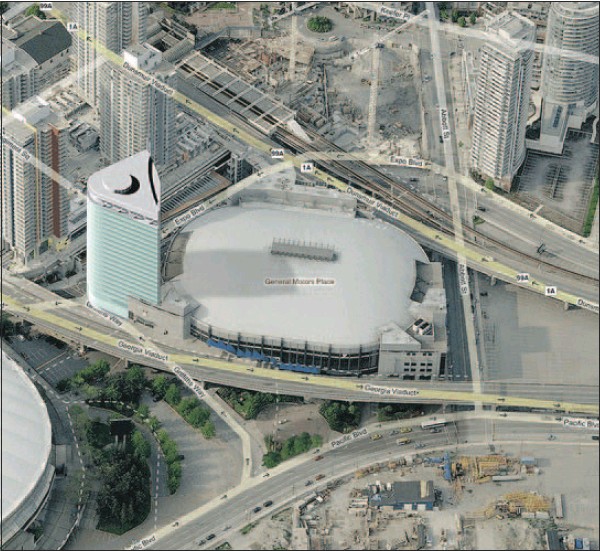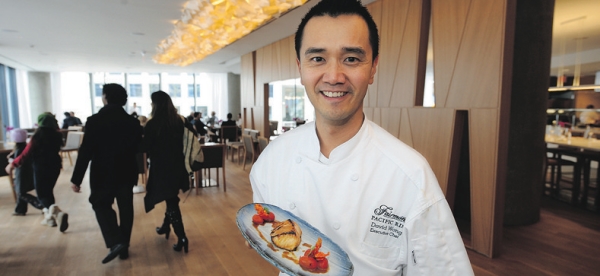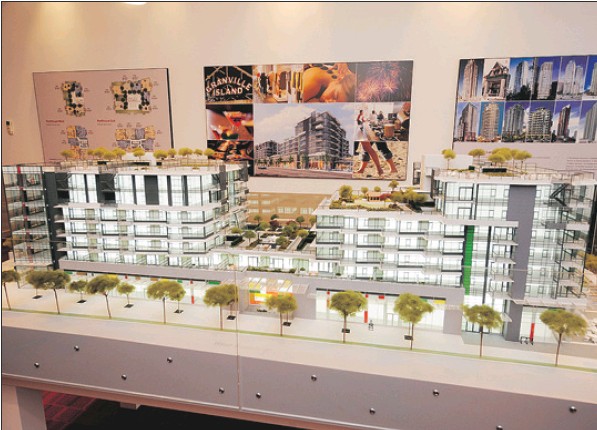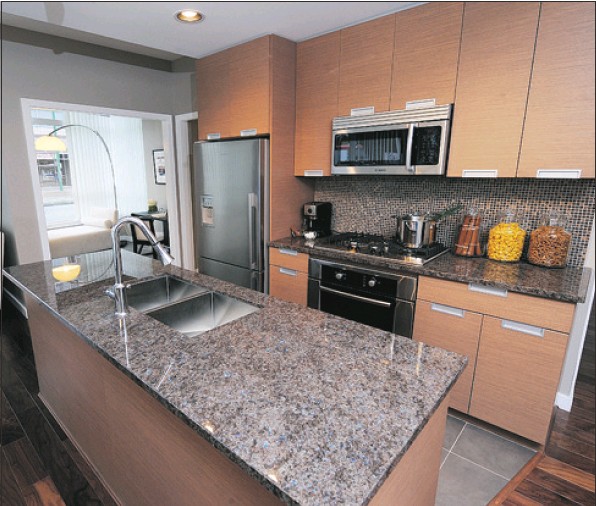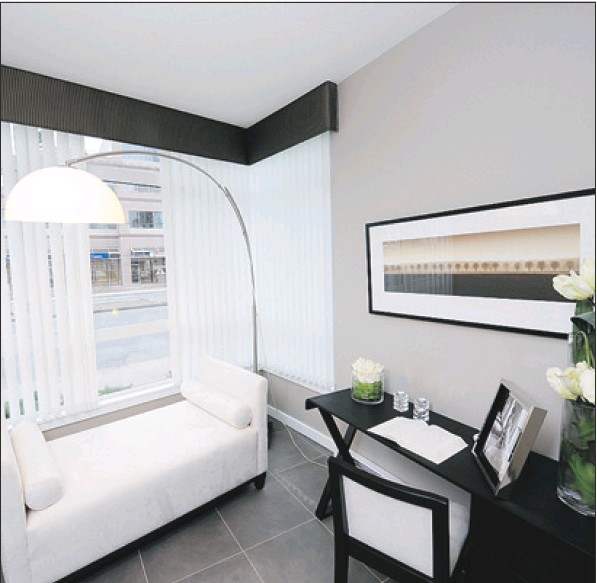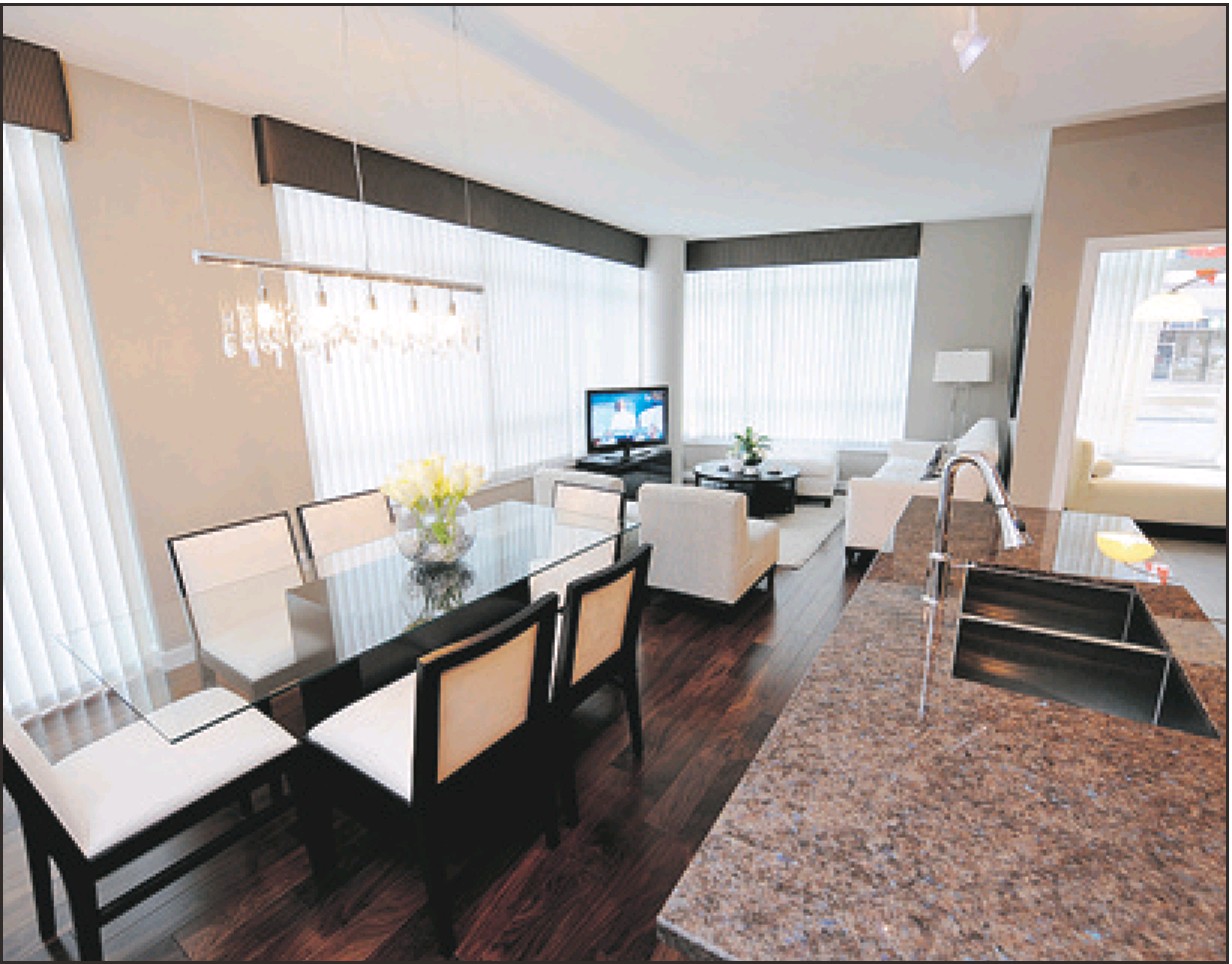Vancouver landmark makes way for a new ‘hood
Sanjin Cvetkovic
Other
Say goodbye to the Cecil strip bar and hello to the Rolston, a condo project developers hope will anchor a new neighbourhood called Midtown
One night in late January, developer Will Lin held a catered party for the closing of Vancouver’s Cecil strip bar, complete with strippers and lobster bisque appetizers.Topless strippers, who had been told to keep their pants on, worked the pole for the suit-and-tie crowd that had assembled to hear about a new condo project called the Rolston.
It was an awkward merger, but one that symbolized the end of the era of strip bars and sex shops and the introduction of a new neighbourhood the developer calls Midtown.
Midtown is the future neighbourhood at the north end of the Granville Street Bridge, currently anchored by the Cecil Hotel and the Yale Hotel and Pub at 1300 Granville. By the summer of 2012, the 23-storey, gold LEED-certified Rolston condo development and restaurant is scheduled to stand where the gritty old Cecil is now.
The Cecil closes permanently this summer. Mr. Lin, president of Rize Alliance Properties, tried auctioning off the club’s strip pole, but ended up buying it for charity himself, for $3,000. Pre-sales for the Rolston begin this month, ranging from $350,000 for a one-bedroom condo to $650,000 for a two-bedroom.
The Rolston and a Cressey condo development at Drake and Howe streets are the first phase of a new neighbourhood that is to get under way in the next five years. Gone are most of the pornography and drug-paraphernalia shops that dominated that part of Granville for so many years. The marketing for the Rolston is aimed at an urban demographic attracted to nearby cultural hot spots that have popped up, such as the Dance Centre, Pacific Cinematheque and the Roundhouse Community Arts Centre.
“We are selling a lifestyle, meaning they are going to use their homes for a place of rest and do a lot of entertaining in the neighbourhood,” Mr. Lin says.
The Cecil Hotel pub is credited for being the locale where Greenpeace was spawned in the 1970s, back when it was a pool hall. But while the Cecil Hotel has long been a familiar landmark at the foot of the Granville Street Bridge, it’s past its expiry date, Mr. Lin says.
“The demise of the Cecil as a strip bar is attributable to the Internet. I was talking to the owner and the revenue was definitely not at an all-time high. And I don’t think we are taking on a big public amenity there that everybody else wants by demolishing the Cecil.
“When people start moving into a neighbourhood, they turn it into a neighbourhood that they want to live in,” he adds.
The Yale pub, famous for its blues acts, will also get a facelift and continue as a major destination for blues-music fans. As for the hotel part of the century-old Yale, originally built to house CPR workers, the 44 residents won’t be forced out. Part of the deal with the city is that the rooms will be renovated for 44 single-room occupants.
The long-term city plan, approved a year ago, involves light industrial property, a public-market-type area, condominiums, retail and better transit routes. The plan includes a radical transformation of the north end of the bridge: the two off-ramps – also known as the “Granville loops” – will be removed entirely and replaced by the traditional street grid. The area, bounded by Drake, Howe, Pacific and Seymour streets, includes the redevelopment of several city-owned sites composed of market and non-market housing. The dark area under the bridge will be better utilized as a market-style shopping district that will resemble the look and scale of Granville Island.
In other words, the loops at the north end of the bridge are a waste of space. With 31,000 cars on the Granville Street Bridge every day, only 5,000 use the west loop and 3,600 use the east loop, according to a city study.
“The transportation plan looked at some site-specific initiatives that would take areas of the downtown that had really been designed to favour automobiles and change it to favour pedestrians or transit or cyclists,” senior central area planner Michael Gordon says. “And definitely one of the areas that was problematic was where we have the two loop structures.
“The city should really primarily be designed for pedestrians and cyclists and transit, rather than being auto-oriented. Car drivers are a minority in the downtown peninsula.”
As an example, city analysis found that 75 per cent of people who shop at trendy Urban Fare in nearby Yaletown arrive on foot, not by car.
Off-ramps do not move traffic effectively and they also waste valuable space that could be used to densify the area. They are an outmoded idea from the 1950s, when cars ruled. “They were built when freeways and on-ramps and off-ramps were the mode of moving traffic,” senior development planner Anita Molaro says.
For pedestrians, added crosswalks will link downtown with the shoreline of False Creek. As it is now, zooming cars make the walk to the water from downtown an awkward proposition.
As to whether the area will be called “Midtown” remains to be seen. Mr. Gordon says some names given to new neighbourhoods stick, while others don’t. Nearby Yaletown was named after the CPR workers who went to work there and had their houses from the town of Yale shipped down on barges. Those houses are long gone, but the name lives on. Maybe the new neighbourhood will be called the Granville Loops, even when the loops are gone?
Mr. Lin has lived in Vancouver since the eighties and has been behind several projects in Yaletown. He sees the Rolston as one of the pioneer city developments that mix social and market housing. When the Cecil is demolished and the Yale Hotel undergoes its renovation in about a year, the 44 single-room occupants at the Yale will be relocated to other social housing. When the Yale renovation is finished by the summer of 2012, those occupants will be given the opportunity to return to the remodelled rooms.
However, many of the seniors who resided at the Yale Hotel have already moved out, says former owner Waide Luciak, who owned the Yale from 1987 until Mr. Lin purchased it two years ago. As part of that deal, Mr. Luciak has plans to buy the Yale building back from Mr. Lin and return to business as usual.
Mr. Luciak says his single-room occupants had been at the Yale Hotel for many years. One senior, who recently died just before reaching 100 years old, had lived in the hotel for most of his life.
All the occupants who left did so because they had been offered better accommodation, Mr. Luciak says. “People were coming around from different housing societies and telling them that if they wanted, they could move into units in concrete high-rises that are 50 per cent larger with cooking facilities.
“It is better accommodation subsidized by government, whereas I am a private enterprise – I can’t afford to do as much as government can. But my rents are a little lower. I am a friendly landlord who hasn’t given increases. I love the old boys.
“Typically what happens is, the old boys who live upstairs call the downstairs bar their living room. They are in the living room every day in a certain seat they call their own. I know all of them. They are very much like family. Upstairs, a lot of them had pictures of my kids on the wall.”
Although condo growth in Vancouver is often associated with bland gentrification of streetscapes, Mr. Lin insists the character of the Yale will be retained. And he is not just referring to retaining single-room occupants. The Yale Pub is famous in Vancouver for playing host to artists such as Stevie Ray Vaughan. Before he died in 2005, English bluesman Long John Baldry was a regular performer at the pub. Mr. Lin says there was no question about maintaining its legendary status as a blues destination.
“We’re creating a real neighbourhood here. We are creating a building that is a representation of what the neighbourhood is all about. It’s not about an ivory tower – it’s full of different mixes.”

